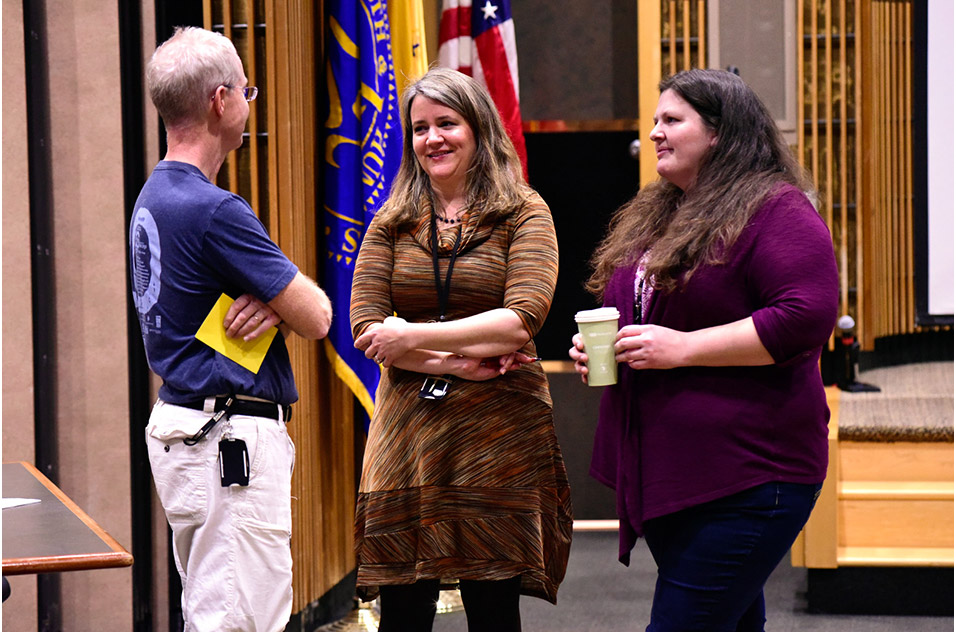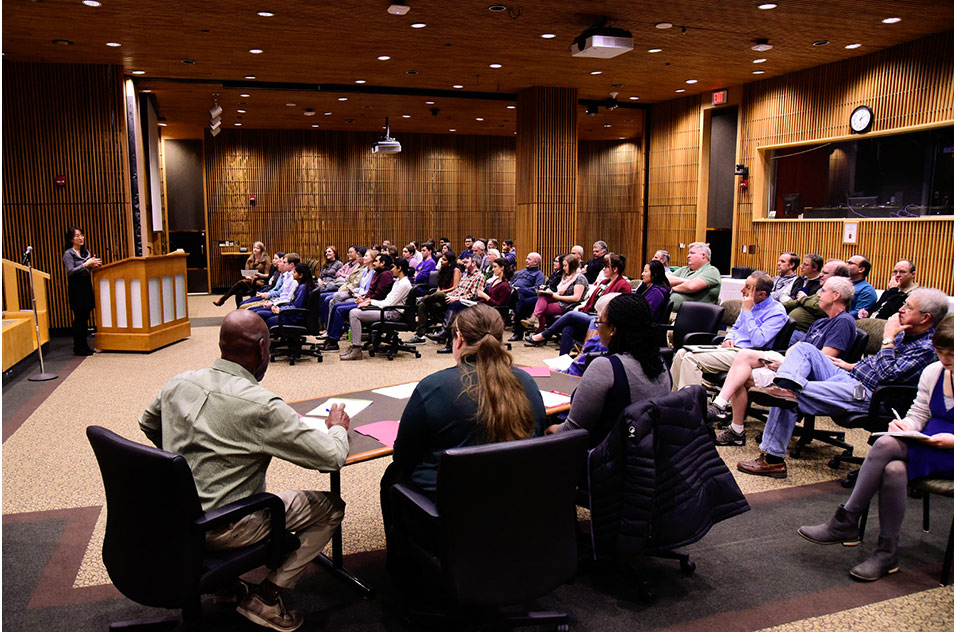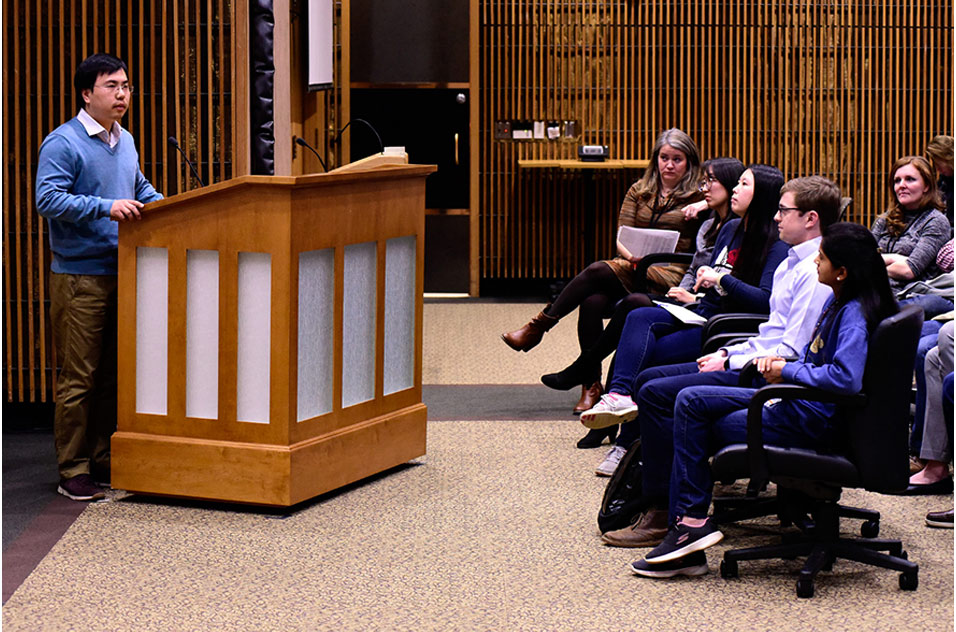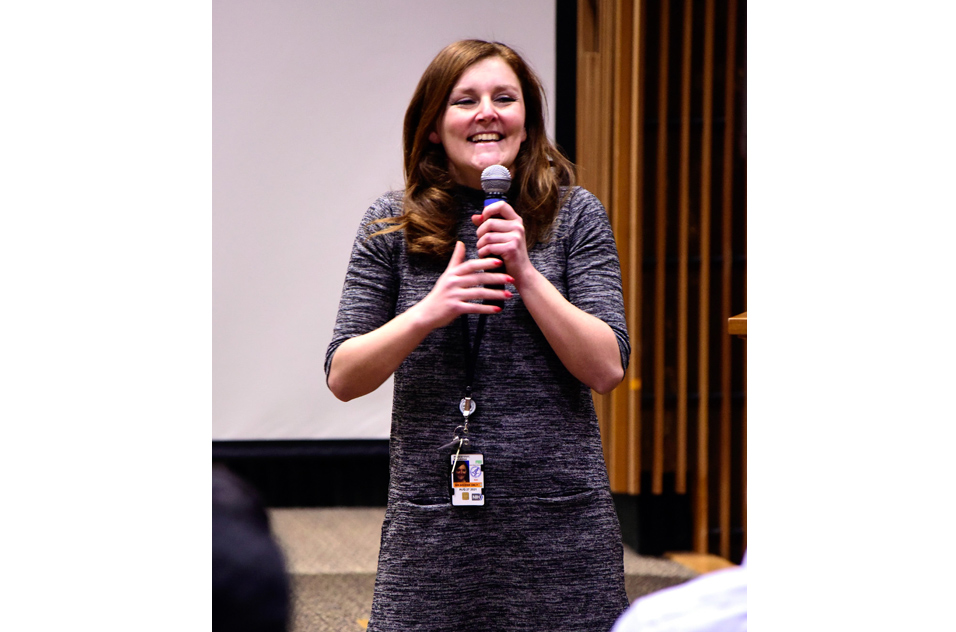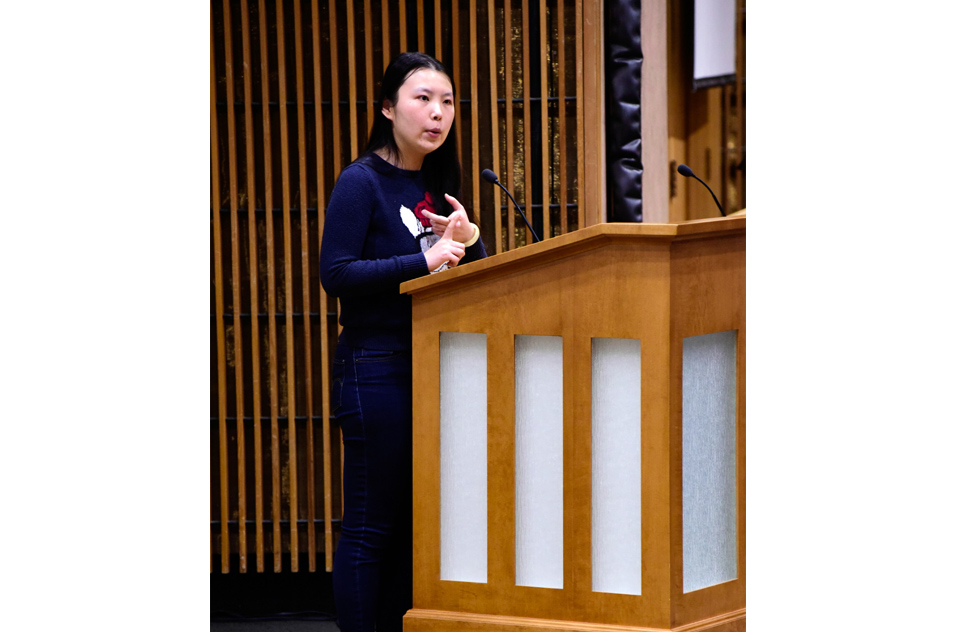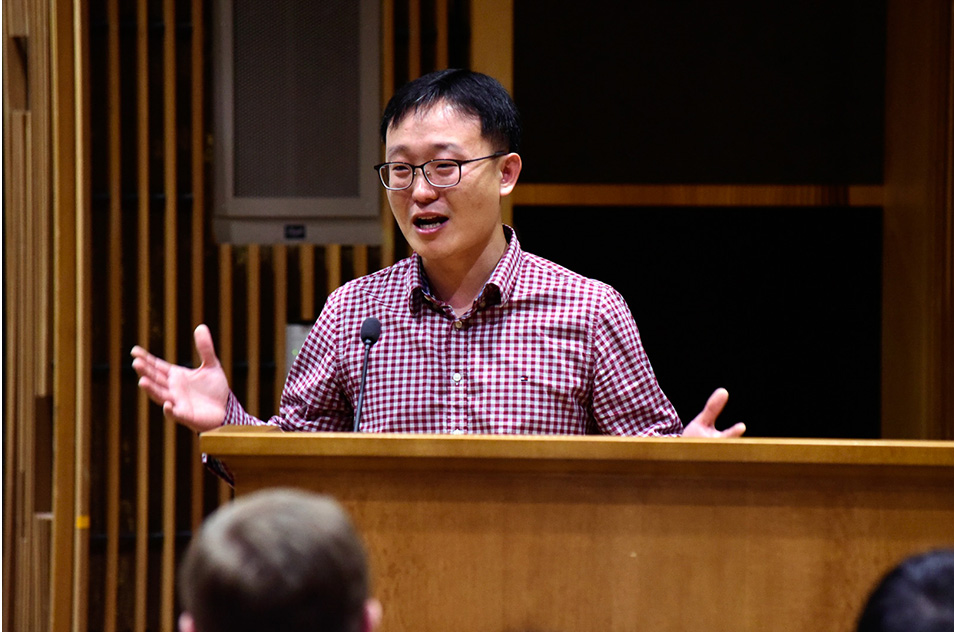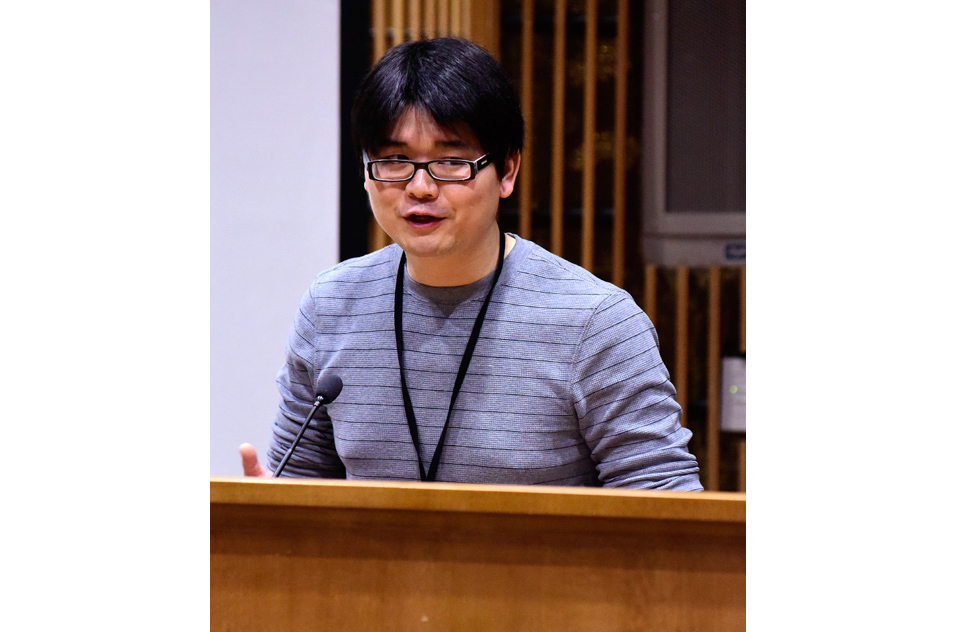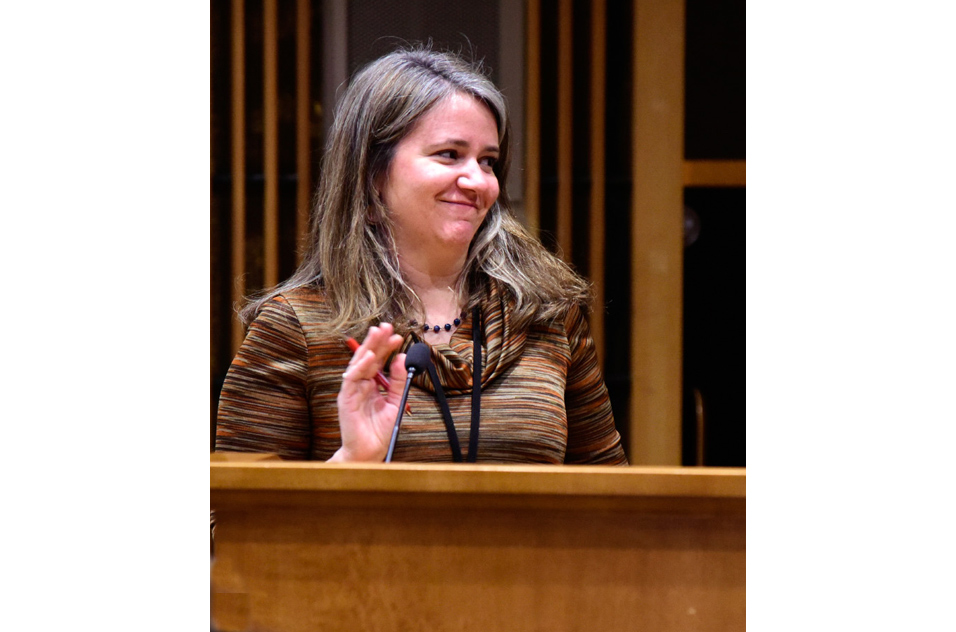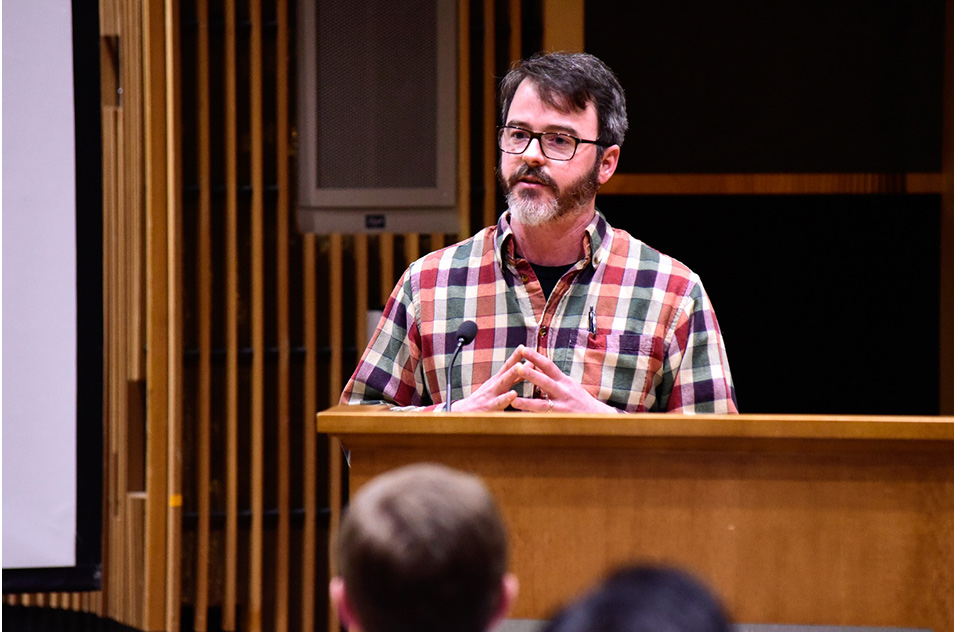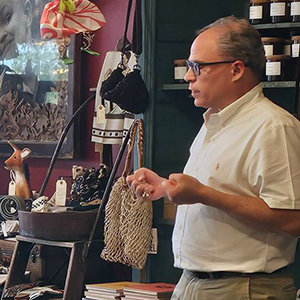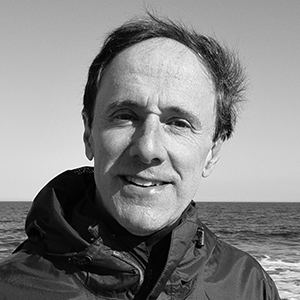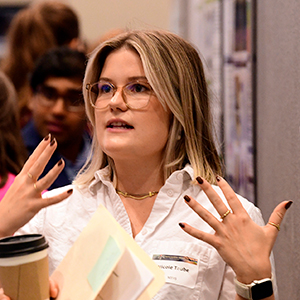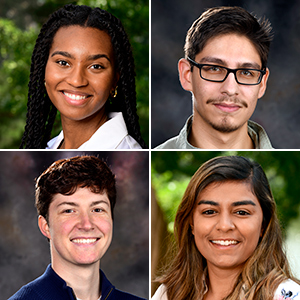Fourteen pre- and postdoctoral trainees participated in this year's Big Picture, Small Talk Communication Challenge, during which they presented a plain-language speech about their research. The competitors had only three minutes to impress the audience with the broader impact their work may have on human health and describe how training at NIEHS has figured in their career development.
'Communicating science to a broad audience is an essential skill to have,' explained Tammy Collins, Ph.D., director of the NIEHS Office of Fellows' Career Development (OFCD), which sponsored the event.
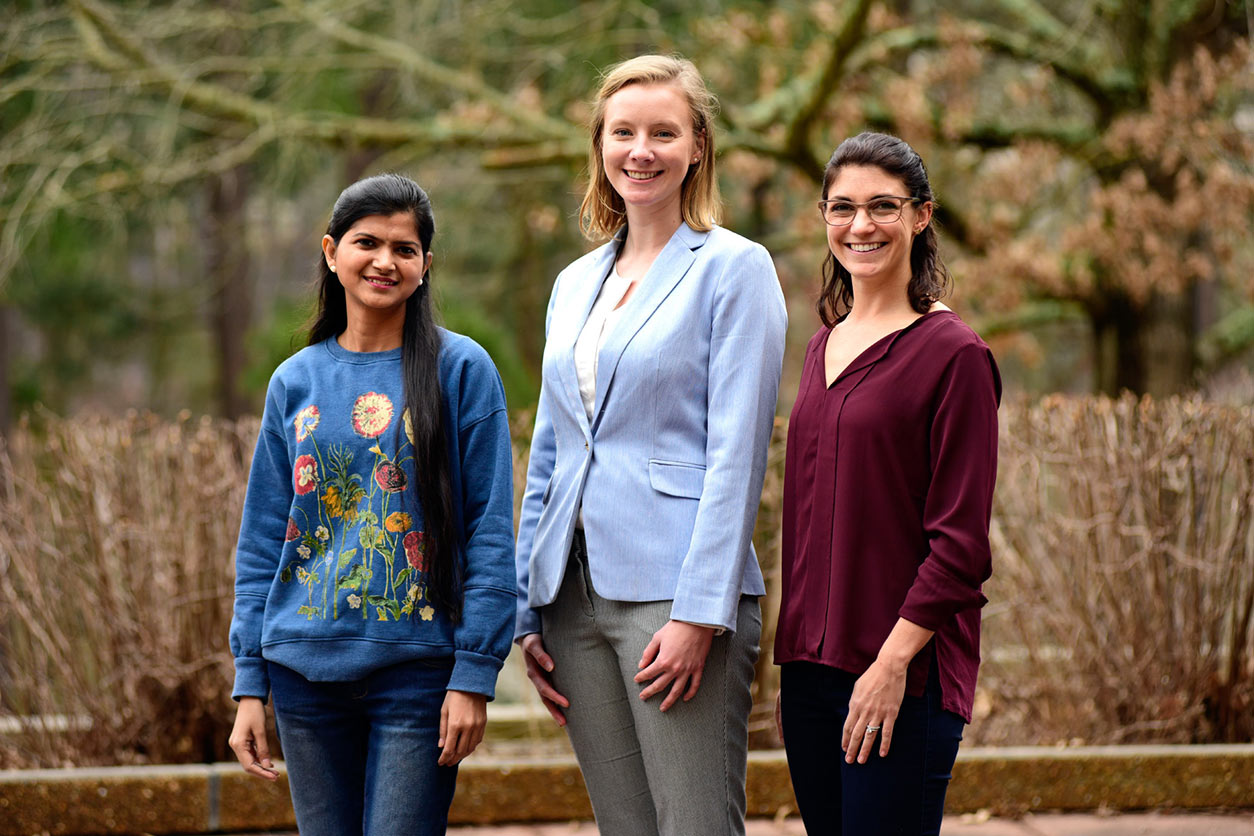 Winners (see sidebar) from left, Srivastava, Lavrich, and Blake were recognized for their ability to explain why their research matters, in three minutes or less. (Photo courtesy of Steve McCaw)
Winners (see sidebar) from left, Srivastava, Lavrich, and Blake were recognized for their ability to explain why their research matters, in three minutes or less. (Photo courtesy of Steve McCaw)NIEHS staff with both scientific and non-scientific backgrounds volunteered to evaluate the talks. Judge Stacey Mantooth, a reference librarian at NIEHS, described how her service as judge benefits the institute, well beyond the fellows who participate.
'This competition gives the librarians the opportunity to learn more about some of the research conducted here at NIEHS,' Mantooth explained. 'A greater familiarity with topics of interest to the scientists helps us provide beneficial materials and services.'
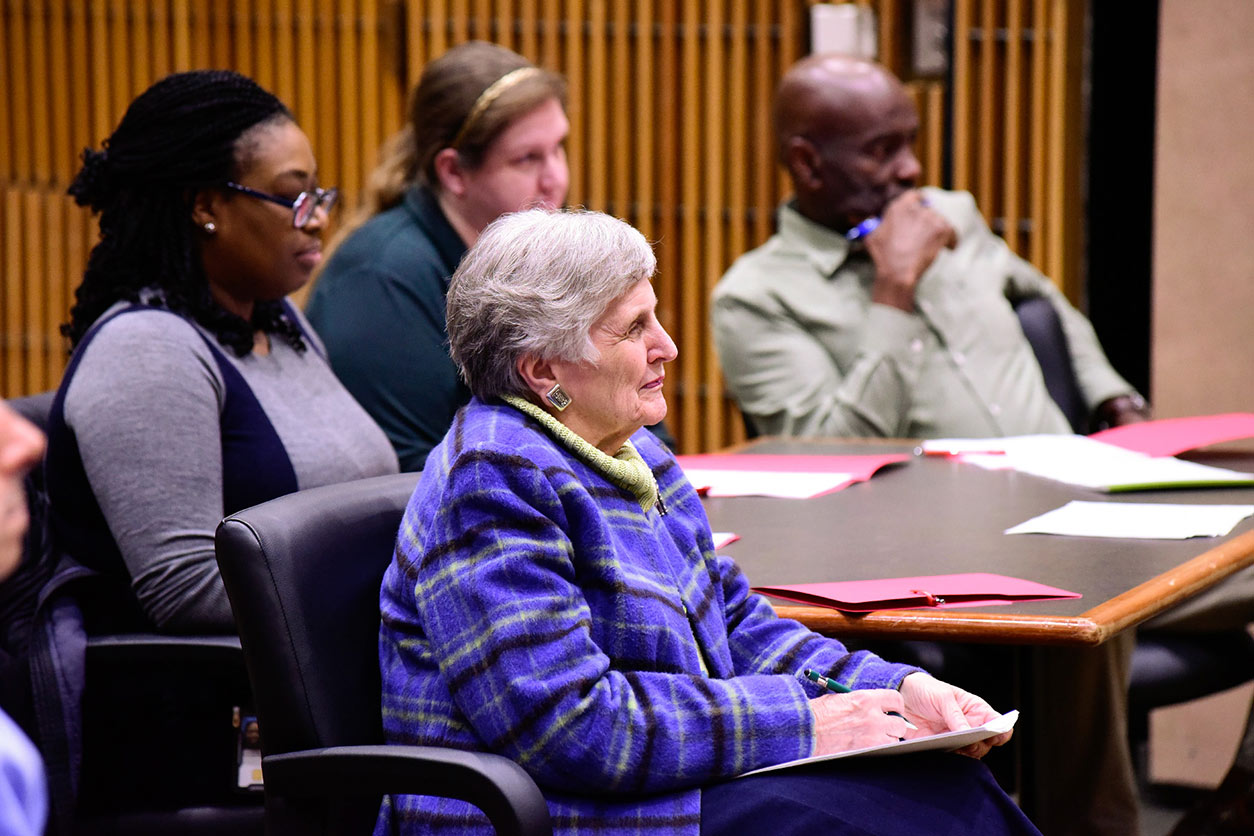 From left, Tocarra Chamberlain, Mantooth, Betty Lewis, and Pinkney Wilder paid close attention to the back-to-back lightning talks. (Photo courtesy of Steve McCaw)
From left, Tocarra Chamberlain, Mantooth, Betty Lewis, and Pinkney Wilder paid close attention to the back-to-back lightning talks. (Photo courtesy of Steve McCaw)Practical collaborations
A big draw for competitor Atlee Watson, Ph.D., to pursue postdoctoral training at the National Toxicology Program (NTP) was the chance to do 'science you can depend on for decisions that matter,' he said. Now, his collaboration with the Minnesota Department of Health on a study of the developmental and reproductive toxicity of boric acid will help the department set minimal levels of boron in drinking water to protect infants across the state.
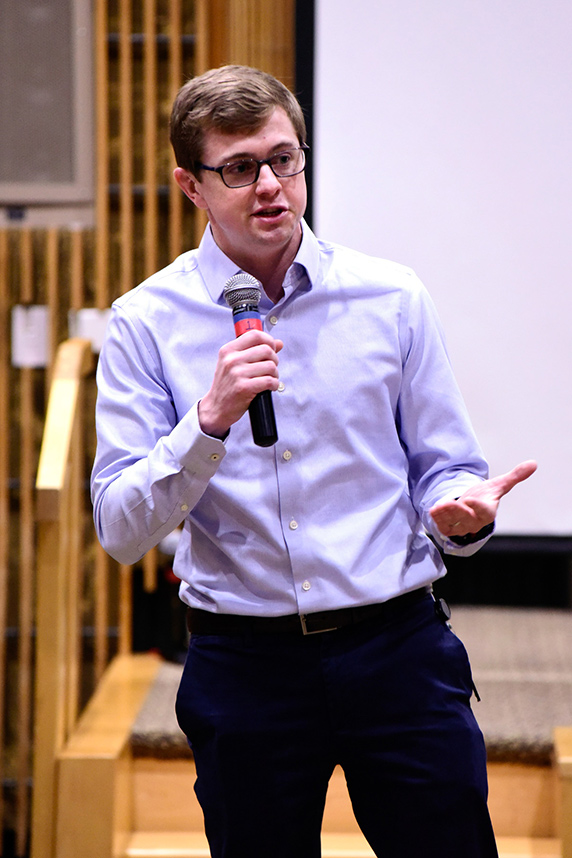 Watson’s mentor is Dori Germolec, Ph.D., head of the NTP Systems Toxicology Group. (Photo courtesy of Steve McCaw)
Watson’s mentor is Dori Germolec, Ph.D., head of the NTP Systems Toxicology Group. (Photo courtesy of Steve McCaw)Similarly, Marianna Rosentsvit, Ph.D., a visiting postdoctoral fellow with NTP, described her collaboration with the U.S. Geological Survey. 'What do you really know about the water in your tap? Your community? Your kids' schools?' she asked the audience. Her work to measure levels of more than 500 chemicals — ranging from industrial chemicals to steroids and pharmaceuticals — in Lake Michigan will clarify both the extent and nature of contamination.
On the clinical side of public health, visiting fellow Ramya Kolli, Ph.D., works with the Mayo Clinic and University of North Carolina to obtain benign breast cancer biopsies for measurement of DNA methylation, which is the addition of methyl tags to DNA. A molecular analysis such as this may help determine why some women are four times more likely to develop breast cancer than other women, despite microscopically indistinguishable breast tissue.
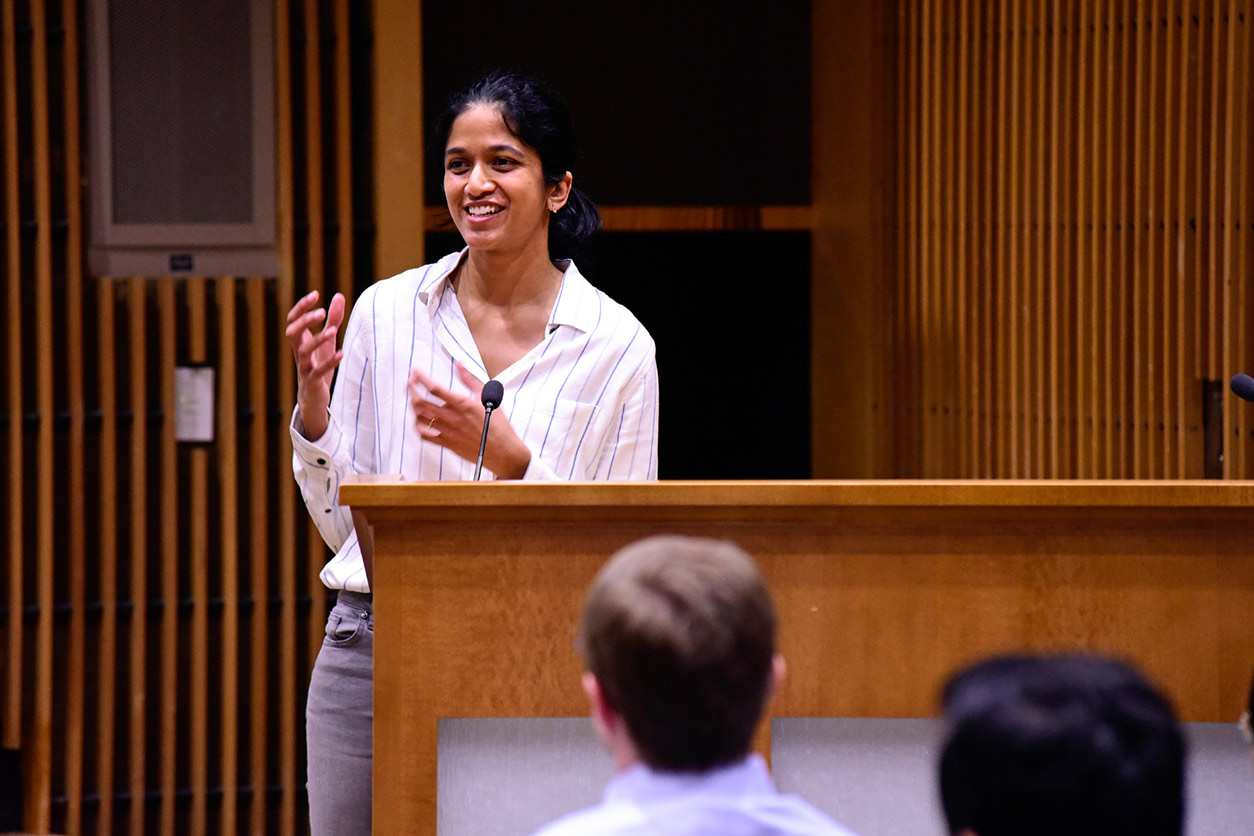 Kolli is a visiting fellow in the Molecular and Genetic Epidemiology Group, led by Jack Taylor, M.D., Ph.D. (Photo courtesy of Steve McCaw)
Kolli is a visiting fellow in the Molecular and Genetic Epidemiology Group, led by Jack Taylor, M.D., Ph.D. (Photo courtesy of Steve McCaw)Communication with creativity
For many competitors, the molecular nature of their work made it extra challenging to impress upon a broader audience just how important their research will be. Third-place winner Chitrangda Srivastava got the audience laughing with her clever metaphor for the target of her research, transcription factor JAZF1, and its role in obesity.
She likened a fat cell to pizza, RNA to a recipe, and DNA to her mother, who created the recipe. In this metaphor, other resources that help her mom create the recipe, such as friends and Youtube, represented transcription factors, including JAZF1. 'It was a unique and amazing experience', reflected Chitrangda. 'It has broadened my ways of thinking for my cellular biology project.'
(Anika Dzierlenga, Ph.D., is an Intramural Research Training Award fellow in the NIEHS Developmental and Reproductive Toxicology Group.)





